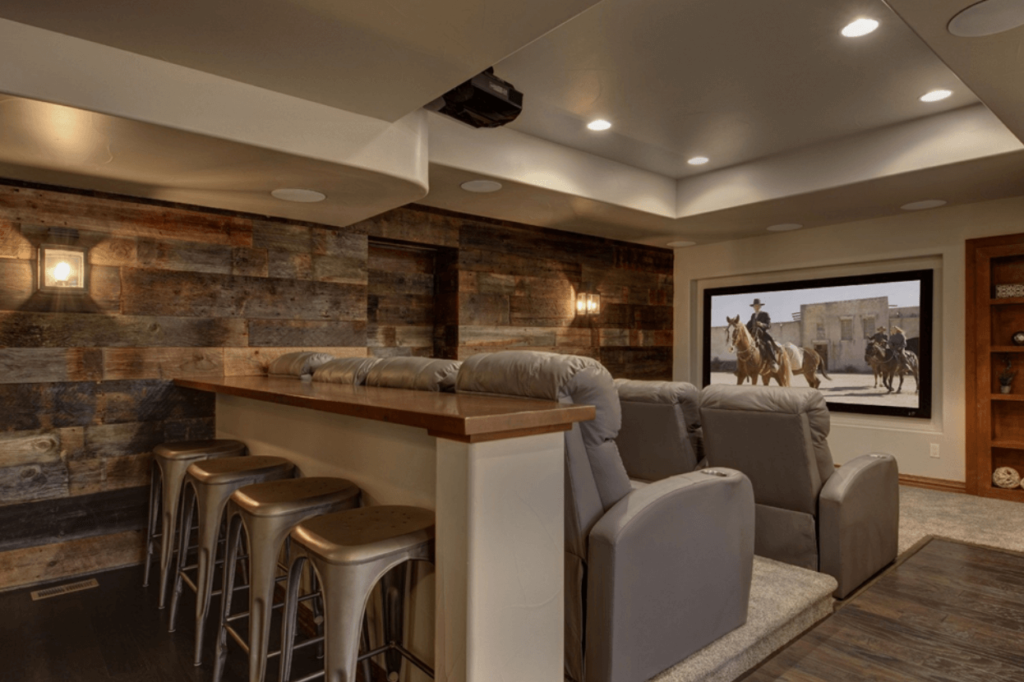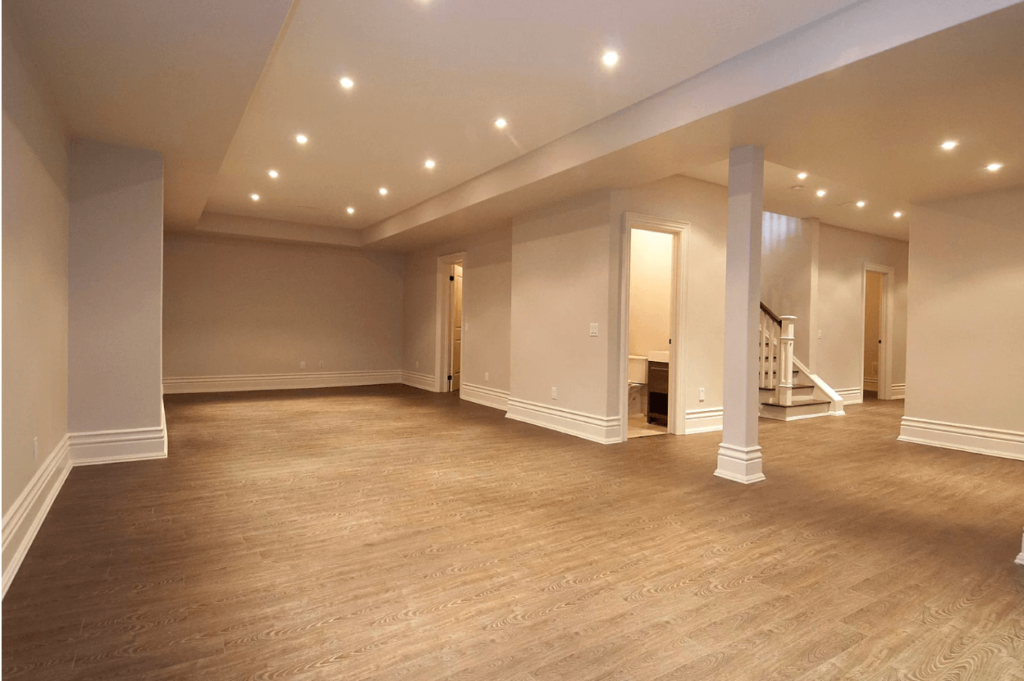In advance of your act of plunging into the notion of renovating your unfinished basement, consider further the finest technique for refurbishing basements. You must understand how you would like to make the most of that specific location.
There are several important advantages to completing your basement. The first and most significant added value is the extra added living area. This is ideal for appeasing an expanding family or constructing an extra living space that may be used as a fun zone, working space, or spare room. Would you like to discover where to commence and perhaps how to begin with your basement finishing project? We’ve put up an amazing guide by CSGRenovations for you to consider!
What to Look for and Repair Before The Renovation
- Tape 2-foot squares of plastic sheeting to the ground and wall to check for moisture. Wait for a few weeks. Your base is not secured if moisture collects beneath it. Your basement requires to be dehumidified if droplets collect on the surface.
- With the use of an awl for corrosion and insect damage, inspect floor beams, rims, header joists, windows with wooden frames, and the sill plate.
- Climb a ladder till you’re almost up high with the underneath of the floor joists to inspect for drooping. Check for anything out-of-line items by looking across them (straight up and down to their orientation).
- Examine your combustion equipment and your home’s exhaust system with a professional to guarantee there is no carbon monoxide accumulation beneath the level.
7 Steps to Successfully Execute Basement Renovation Project
Basement renovations can be a great way to add value to your home while also increasing the amount of living space. However, successfully executing a basement renovation project requires careful planning and execution.
Step 1: Gather basement renovation ideas
Before you begin dismantling your basement and replacing old floorboards and walls, consider how you intend to utilize the area. You can add aesthetic designs like stained concrete floors, different kinds of rugs, and other pieces.
Step 2: Obtain the appropriate building permits
It’s necessary to secure the proper building permits when you’ve decided which type of basement renovation you would like to accomplish and have calculated to ensure that you can handle the expense of it.
Once you opt to restore your underground, you may require a building permit based on the location you reside. Verify to determine if your actions are lawful and whether there are any costs involved. If you have any difficulties, speak with an attorney to see if certain laws enable you to complete your renovation.
Step 3: Wall framing
To start framing your walls, begin placing an order for lumber, especially the top and bottom plates. The sort of cement you must buy depends on the kind of concrete your basement surface is constructed of. Purchase pressure-treated wood, such as timber stand, and install it as a floating wall. This allows the concrete to stretch and compress without placing strain on the rest of the household.
After the installment of the wood, it’s time to put up the drywall. Ensure to pick 6-inch spike nails and space them 24 to 36 inches away when doing this. Utilize 16 inches in the midpoint when outlining your partitions. In addition, fire blocking must be one of your priorities. It can be done by attaching the top plate to the concrete wall.
Step 4: Plumbing installation
This installation should start by finishing the rough-in plumbing. If your basement has existing pipes, it’s a smart option to plan your renovation around these. You can, however, disconnect your wiring and make minor changes to your plumbing. Try to emulate all applicable codes when installing plumbing. Depending on local or municipal codes, various types of plumbing must be of varying diameters.
Step 5: HVAC and electrical work
The execution of this work is preferred to be done by experts to avoid accidents. The electrician will install all the necessary things you need such as additional HVAC units and outlets. Having that in mind, you should first identify how much equipment you plan to include in your basement to install enough units of electrical outlets. After this installation, you can now finish up your walls.
Step 6: Walls and ceilings should be painted
First, you should ensure that the paints you’ll buy are top-quality. The aesthetics come next, so the colors you’ve chosen should appear pleasing to the eyes. If you turn your basement into a kid’s playroom, it’s advisable to choose bright and lively colors. If it’s staged as a wine cellar, wooden, velvety, and darker tones might create harmony in the area.
Step 7: Add the finishing touches
It includes the installation of switch plates, mirrors, and light fixtures. By now, you can start laying your basement’s flooring depending on the materials you preferred. It can be stained concrete, hardwood slabs, tiles, vinyl, or carpet.


